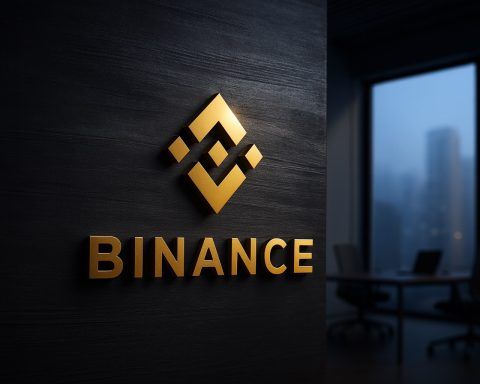Volatility, regulation and security are all colliding in the crypto market today, 20 November 2025. Bitcoin is stabilising just under $92,000 after a sharp sell‑off that wiped hundreds of billions off digital-asset valuations. Spot bitcoin ETFs are back to net inflows, U.S. lawmakers are edging toward a long‑awaited market‑structure law, New Hampshire has approved the first bitcoin‑backed municipal bond, and fresh hacks on BNB Chain and a Trump‑linked token project are keeping security front and centre. [1]
Below is a structured wrap‑up of the most important cryptocurrency news for today, 20.11.2025, curated for Google News and Discover.
Key highlights at a glance
- Bitcoin trades around $92K after breaking below key levels, with sentiment in “extreme fear” and more than $700 billion wiped from crypto markets over the past month. [2]
- U.S. spot bitcoin ETFs flip back to net inflows, while ARK Invest buys roughly $40–42 million in crypto‑related stocks and Jane Street adds a new stake in Marathon Digital. [3]
- The Digital Asset Market Structure CLARITY Act gains momentum in Washington as senators grill Trump’s pick to lead the CFTC; at the same time the SEC drops crypto from its 2026 exam priorities. [4]
- New Hampshire approves a $100 million bitcoin‑backed municipal bond, the first of its kind in the U.S. [5]
- Altcoin headlines: Bitwise’s spot XRP ETF launches today, Canary’s rival XRP fund dominates flows, and Pi Network secures full MiCA compliance in the EU. [6]
- Security worries intensify after a $3.1 million exploit of GANA Payment on BNB Chain and fresh details on a security breach at Trump‑linked WLFI, plus lingering fallout from Balancer’s $120 million exploit earlier this month. [7]
Bitcoin: holding the line near $92K after a brutal drawdown
After days of heavy selling, Bitcoin is trying to catch its breath.
- As of today, bitcoin is trading around $92,000, up less than 1% in the last 24 hours, according to market data and multiple price trackers. [8]
- That bounce follows a slide earlier this week when BTC fell below $90,000 — its lowest level in seven months — and nearly 30% off its recent peak, part of a move that has erased roughly $1.2 trillion in total crypto market value since early October. [9]
Technically, the picture remains fragile:
- Bitcoin has broken below its 365‑day moving average near $102,000, a level that acted as a key cycle signal in previous bear markets. [10]
- Coinpaper reports the Crypto Fear & Greed Index has plunged to 10, echoing panic levels last seen in 2022, and estimates that over $700 billion has been wiped from the broader crypto market in roughly a month. [11]
- Binance’s own sentiment gauge likewise shows the market in “Extreme Fear” territory around the mid‑teens. [12]
Altcoins are feeling the pressure even more:
- CoinDesk notes that ether (ETH) is down around 3–4% today, dragging its broader CD20 index lower, while many mid‑caps follow suit. A few names like Cosmos (ATOM) and Zcash (ZEC) stand out with gains, but these are exceptions rather than the rule. [13]
- Separate market updates highlight outsized moves in niche tokens such as TNSR, DYM and SAGA, which are up triple‑digits and double‑digits respectively — underlining how pockets of speculation can still flare even in risk‑off conditions. [14]
In short, bitcoin has stabilised for the day, but the backdrop is still one of elevated fear, heavy liquidations and selective altcoin speculation.
ETF flows and big money: institutions are buying into the weakness
Despite the gloomy headlines, institutional flows hint that large players are treating this correction as an opportunity rather than a capitulation.
Spot bitcoin ETFs return to net inflows
After five straight sessions of outflows, U.S. spot bitcoin ETFs flipped back to positive territory on Wednesday:
- The Block reports that the products saw about $75.5 million in net inflows, led by BlackRock’s flagship IBIT fund, as bitcoin pushed back above $92,200. [15]
This marks a sharp contrast to the record outflows earlier in the month and suggests that, at least for now, ETF investors are willing to step in on dips rather than abandon the asset class entirely.
ARK Invest doubles down on crypto stocks
Cathie Wood’s ARK Invest is leaning into the downturn:
- According to trade filings summarised by The Block, ARK bought $17.7 million in Circle Internet shares, $16.9 million in Bullish stock, and $7.6 million in BitMine, spread across three of its ETFs. [16]
- All three stocks fell sharply on the day — Circle closed down almost 9%, BitMine dropped 9.6%, and Bullish lost 3.6% — meaning ARK was actively buying the slide. [17]
- CoinDesk separately estimates ARK’s buys in crypto‑related names this week at “almost $40 million”, reinforcing the scale of the bet. [18]
Elsewhere, Jane Street — one of the world’s most sophisticated trading firms — has reportedly taken a $13 million stake in bitcoin miner Marathon Digital while a large bitcoin “whale” accumulated around $120 million in BTC, signalling continued institutional interest at current levels. [19]
Taken together, ETF inflows and corporate accumulation paint a very different picture from retail sentiment: day‑traders are panicking, but long‑horizon capital is quietly adding exposure.
U.S. regulation: CLARITY Act momentum, CFTC grilling and a softer SEC stance
Regulatory news out of Washington is just as important as price action today.
CLARITY Act edges closer to reshaping U.S. crypto rules
CryptoNinjas reports that Congress is advancing the Digital Asset Market Structure Clarity Act (“CLARITY Act”), a bill designed to end the long‑running turf war between the SEC and the CFTC over who regulates what. [20]
Key points:
- The bill would create three categories of assets:
- Digital commodities
- Investment‑contract assets
- Permitted payment stablecoins [21]
- The CFTC would gain primary oversight over digital commodities and spot markets, while the SEC would continue to supervise assets sold as investment contracts. [22]
- Certain non‑custodial protocols, developers and node operators that don’t hold customer assets would be exempt from full registration, acknowledging the realities of decentralised infrastructure. [23]
- The bill has already passed the House with bipartisan support and now heads to the Senate, where details around DeFi exemptions and AML safeguards are likely to be fine‑tuned. [24]
Supporters argue this framework finally gives builders and exchanges predictable rules. Critics warn that pushing more authority to the CFTC, an agency with a smaller budget and lighter disclosure regime, could weaken investor protections and leave AML gaps if not properly resourced. [25]
CFTC nominee grilled in Senate over crypto stance
The regulatory tug‑of‑war was on full display yesterday as Michael Selig, President Trump’s nominee to chair the CFTC, faced tough questions in a Senate confirmation hearing. [26]
- Lawmakers pressed him on how he intends to oversee crypto markets if the CLARITY Act hands the CFTC broader powers, including over spot trading.
- Senators repeatedly referenced the bill, highlighting concerns about resource constraints, enforcement capabilities and coordination with the SEC. [27]
The hearing underscores that personnel and policy are deeply intertwined: whoever ends up at the CFTC helm will have huge influence over how the new framework is applied in practice.
SEC quietly removes “crypto assets” from 2026 exam priorities
In a separate but equally significant move, a new policy analysis from Indonesian exchange Pintu highlights that the U.S. Securities and Exchange Commission’s “2026 Examination Priorities” document no longer mentions crypto, digital assets, or blockchain at all. [28]
Instead, the SEC says it will focus examinations on:
- Information security and operational resilience
- Identity theft and changes to Regulation S‑P
- Anti–money‑laundering and sanctions compliance [29]
According to reporting citing Crypto.News, this shift follows a broader White House policy turn:
- The administration has limited federal work on central bank digital currencies and instead announced both a Strategic Bitcoin Reserve and a U.S. digital‑asset reserve earlier this year. [30]
Some observers interpret the new exam priorities as a de‑escalation of the SEC’s frontline scrutiny of crypto intermediaries, even as Congress prepares a more formal rulebook via the CLARITY Act.
New Hampshire launches first bitcoin‑backed municipal bond
One of today’s most eye‑catching adoption stories comes from the U.S. state of New Hampshire, which is rolling out the first bitcoin‑backed municipal bond in the country. [31]
According to Pintu’s summary of the initiative:
- The New Hampshire Business Finance Authority has approved a $100 million conduit bond where bitcoin is posted as collateral.
- Borrowers must deposit BTC worth 160% of the bond’s value; if collateral coverage falls below 130%, an automatic liquidation mechanism kicks in to protect bondholders. [32]
- Custody of the bitcoin is handled by BitGo, while the state authority oversees the structure without directly taking on credit risk. [33]
- Proceeds — plus any appreciation on the collateral — feed into a dedicated Bitcoin Economic Development Fundaimed at supporting innovation and entrepreneurship in the state. [34]
New Hampshire has already attracted attention for creating a strategic bitcoin reserve; adding a BTC‑collateralised bond pushes it further toward becoming a testbed for integrating crypto with traditional public finance.
If the model proves workable, analysts expect other crypto‑friendly jurisdictions to explore similar structures, especially as long‑term holders look for ways to unlock liquidity without selling their coins.
Altcoin & ETF spotlight: XRP, Pi Network and more
Spot XRP ETFs move centre stage
The XRP ecosystem is having a busy week on Wall Street:
- The Block reports that Bitwise’s spot XRP ETF officially launches today on the New York Stock Exchangeunder ticker “XRP”, with a 0.34% management fee waived on the first $500 million in assets for the first month. [35]
- It is the second U.S. spot XRP product, following Canary Capital’s XRPC fund, which has already accumulated more than $270 million in net inflows since its debut last week. [36]
- Coinpaper notes that Canary’s XRP ETF is now roughly 360× larger than the firm’s Solana ETF, underlining how aggressively investors are rotating into regulated XRP exposure. [37]
The launches are part of a broader altcoin ETF rush:
- U.S. issuers have recently rolled out funds tracking Solana, XRP, Litecoin and Hedera, with more applications pending for Cardano, Avalanche, Polkadot and others.
- Spot Solana ETFs alone have drawn around $420 million in net inflows across six products since late October, according to The Block’s data dashboard. [38]
Pi Network gains MiCA approval in the EU
On the regulatory‑adoption front, Pi Network (PI) has quietly cleared a major hurdle in Europe:
- Coinpedia’s live news feed reports that Pi has achieved full compliance with the EU’s MiCA framework, confirmed via an updated whitepaper on 19 November. [39]
- The move paves the way for listings on regulated EU exchanges, easing concerns about legal status and giving institutional platforms a clearer framework to support PI pairs.
- Following the announcement, PI’s price rose nearly 5% while trading volume jumped more than 120%, suggesting traders are already positioning for broader market access. [40]
This is one of the first high‑profile examples of a crypto project explicitly touting MiCA alignment as a catalyst for liquidity and adoption, a theme likely to repeat as the EU’s regime fully comes into force.
Security & hacks: GANA exploit, WLFI breach and ongoing BNB‑chain risk
Security remains the industry’s Achilles’ heel, and today brings two fresh reminders.
GANA Payment exploited for over $3.1 million on BNB Chain
The Block reports that GANA Payment, a small payment‑token project on BNB Smart Chain, was drained of more than $3.1 million earlier today. On‑chain sleuth ZachXBT traced the funds through a familiar pattern: [41]
- The attacker consolidated assets into a single BSC address, swapping most of them into BNB.
- Roughly 1,140 BNB (about $1.04 million) was sent to Tornado Cash on BSC as an initial obfuscation step. [42]
- Additional funds were bridged to Ethereum, where around 346.8 ETH (≈$1.05 million) went into Tornado Cash, with another ~346 ETH still sitting in a separate address at the time of reporting. [43]
- Data from GeckoTerminal shows the GANA token has crashed more than 90% after the exploit. [44]
The Block notes that this attack fits a broader pattern of mid‑sized exploits on BNB Chain, with smaller projects collectively losing over $100 million in 2025, often due to unaudited contracts and thin liquidity. [45]
WLFI, Trump‑linked project, reveals breach amid sanctions concerns
Another story attracting attention is a security incident at World Liberty Financial (WLFI), a crypto project linked to U.S. President Donald Trump and members of his family. [46]
According to new reporting from 99Bitcoins:
- WLFI disclosed that it froze a subset of user wallets back in September after “third‑party security lapses” exposed seed phrases and enabled phishing attacks.
- The team says its core smart contracts were not compromised and that it is testing new smart‑contract logic to reallocate user funds to fresh wallets, but only after affected users re‑complete KYC checks. [47]
- So far, WLFI has not revealed how many wallets or how much value was impacted, and the compromised wallets remain frozen. [48]
The disclosure comes just days after U.S. Senators Elizabeth Warren and Jack Reed urged the Departments of Justice and Treasury to investigate claims that WLFI tokens may have been sold to sanctioned entities, including addresses associated with North Korea’s Lazarus Group. [49]
Some blockchain security experts, however, argue that the watchdog report linking WLFI to sanctioned wallets misinterpreted token flows and produced false positives, warning that sloppy analysis could unjustly freeze legitimate users’ funds. [50]
Coupled with earlier news of a $120 million Balancer exploit this month, the latest incidents reinforce an uncomfortable reality: smart‑contract bugs, third‑party security lapses and poor key management remain systemic risks, particularly on chains with many small, lightly audited projects. [51]
Legal clash in DeFi: Core Foundation vs. Maple Finance
Beyond outright hacks, legal disputes are also reshaping the decentralised finance landscape.
The Core Foundation announced that the Grand Court of the Cayman Islands has granted an injunction against Maple Finance, blocking the lender from launching a rival bitcoin‑yield product and restricting dealings in Core’s native token pending arbitration. [52]
According to court filings and Core’s public statements:
- Core alleges that Maple misused confidential information from an earlier partnership — where the two worked together on an lstBTC yield product — to build a competing offering called “syrupBTC” in breach of a 24‑month exclusivity clause. [53]
- The judge concluded there was a “serious issue to be tried” and that simple monetary damages would not be an adequate remedy, given the potential for Maple to gain a head start by launching the rival product. [54]
- Maple denies wrongdoing and says the injunction hurts lenders, insisting that its core business remains fully operational. [55]
The case highlights a growing tension in DeFi between open‑source composability and traditional commercial contracts. Partnerships may start in the ethos of permissionless finance, but once multi‑million‑dollar incentives and exclusivity agreements are involved, disputes increasingly end up in conventional courts, not DAOs.
What today’s crypto headlines mean for investors and builders
Putting all of today’s stories together, a few big themes emerge:
- Macro and market structure are clashing.
Rising global yields and liquidity shocks have triggered a sharp re‑pricing of risk assets, with bitcoin losing key technical levels and wiping out hundreds of billions in paper value. Yet ETF inflows, whale accumulation and institutional buys suggest that long‑term demand hasn’t disappeared — it’s just becoming more selective and regulated. [56] - Regulation is shifting from “enforcement first” to “rules first”.
The CLARITY Act, CFTC confirmation hearings and the SEC’s new exam priorities all point toward a future where crypto markets operate under clearer — though not necessarily lighter — rules, with the CFTC playing a bigger role and MiCA‑style frameworks in the EU shaping altcoin adoption. [57] - Real‑world integration is accelerating.
New Hampshire’s bitcoin‑backed municipal bond, XRP and Solana ETFs, and Pi Network’s MiCA compliance are early signals of crypto assets moving deeper into mainstream financial rails, from public debt markets to regulated investment products. [58] - Security remains the industry’s weakest link.
The GANA exploit, WLFI breach and ongoing BNB‑Chain and DeFi hacks underline that smart‑contract risk, key management, and third‑party vulnerabilities remain ever‑present, even as regulation tightens elsewhere. [59]
For traders and builders alike, the message is mixed but clear:
- Volatility and drawdowns can be extreme, especially when leverage and macro shocks collide.
- At the same time, institutionalisation, clearer rules and new on‑ramps are expanding the long‑term footprint of crypto in global finance.
- Robust risk management, careful counterparty selection and attention to regulatory developments are critical — and nothing in today’s news changes the basic rule that you should never invest more than you can afford to lose.
This article is for informational purposes only and does not constitute financial, legal or tax advice.
References
1. www.reuters.com, 2. coinpaper.com, 3. www.theblock.co, 4. www.cryptoninjas.net, 5. pintu.co.id, 6. www.theblock.co, 7. www.theblock.co, 8. coinpaper.com, 9. www.reuters.com, 10. coinpaper.com, 11. coinpaper.com, 12. www.binance.com, 13. www.coindesk.com, 14. www.binance.com, 15. www.theblock.co, 16. www.theblock.co, 17. www.theblock.co, 18. www.coindesk.com, 19. coinpaper.com, 20. www.cryptoninjas.net, 21. www.cryptoninjas.net, 22. www.cryptoninjas.net, 23. www.cryptoninjas.net, 24. www.cryptoninjas.net, 25. www.cryptoninjas.net, 26. www.reuters.com, 27. www.reuters.com, 28. pintu.co.id, 29. pintu.co.id, 30. pintu.co.id, 31. pintu.co.id, 32. pintu.co.id, 33. pintu.co.id, 34. pintu.co.id, 35. www.theblock.co, 36. www.theblock.co, 37. coinpaper.com, 38. www.theblock.co, 39. coinpedia.org, 40. coinpedia.org, 41. www.theblock.co, 42. www.theblock.co, 43. www.theblock.co, 44. www.theblock.co, 45. www.theblock.co, 46. 99bitcoins.com, 47. 99bitcoins.com, 48. 99bitcoins.com, 49. 99bitcoins.com, 50. 99bitcoins.com, 51. dappradar.com, 52. www.theblock.co, 53. www.theblock.co, 54. www.theblock.co, 55. www.theblock.co, 56. coinpaper.com, 57. www.cryptoninjas.net, 58. pintu.co.id, 59. www.theblock.co










